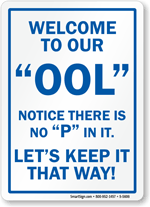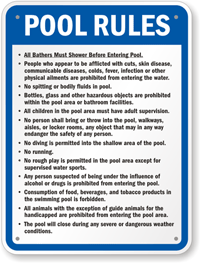6 ways climate change makes beaches less safe
A recent story out of the U.K. highlights another growing problem swimmers around the world are beginning to face: Climate change is making beaches and open water swimming less safe. In the U.K., the Royal National Lifeboat Institution (RNLI) is warning spring vacationers that violent winter storms (which many scientists attribute to climate change) have dramatically altered the coastlines. Among the dangers are rip currents in previously safe waters, along with more intense rip currents elsewhere. (Rip currents are narrow channels of fast-moving water that pull swimmers away from the shore. They’re also the no. 1 killer of swimmers every year.)

Riptides are more common due to a changing sea bottom, but climate change brings other threats, too. From Parker Knight.
Some experts are now concerned that what’s happening in the U.K. is happening worldwide: “The worry is that a continued rise in sea level could change the sea bottom near the coast, shrinking the beach area and changing the bathymetry [yes, this is a word] of the ocean bottom, in turn making some areas of the beach more susceptible to rip tides,” says one site tracking the effects of climate change on beach safety.
That worry seems to be more than just conjecture. The site notes that local lifeguards are reporting more intense rip currents in places such as South Carolina, where sea levels have risen more dramatically.
More intense rip currents should set off warning bells for lifeguards and swimmers around the world that beaches are less safe than they used to be and rip currents more deadly. (Experts warn that if you’re ever caught in a rip current, don’t fight it! Swim parallel to the shore and then swim at an angle – away from the current – toward shore.) So when you head to the beach this summer, pay attention to rip current warnings and take extra precaution.
But more intense rip currents aren’t the only dangers climate change seems to be causing for swimmers. Here are 5 other ways climate change is making beaches less safe:
- Jellyfish infestations. In Massachusetts, authorities were shocked when an influx of poisonous Portuguese Man of War jellyfish stung 14, causing beaches to shut. The jellyfish are normally confined to more tropical waters. Beaches around the world report similar influxes of jellyfish.
- Shark attacks. In Korea, shark attacks, once unheard of, have become a serious new problem, also thanks to warming waters. Other areas not prone to shark attacks will likely face similar circumstances.
- Algae Blooms. In Alaska, rising ocean temperatures have apparently caused unusual algae blooms that can put swimmers at risk. The same phenomenon is happening worldwide.
- Flooding. The evidence is incontrovertible: sea levels are rising. In Australia, authorities have posted sea-level rise scenarios for residents of Perth. In the U.S., scientists warn that all coastal regions are at risk, especially those in low-laying areas.
- More unstable coasts: Along with more new and more intense rip currents. British authorities are warning that violent winter storms have created shelves of unstable sand that can be deadly.
As the climate continues to change, these kinds of issues will likely become more prevalent, especially in beach communities, which are more susceptible to flooding than ever before. Just one more reason to learn how to swim and to always take the necessary precautions when you’re in the water!
Category: Natural water, Safety, Sustainability











